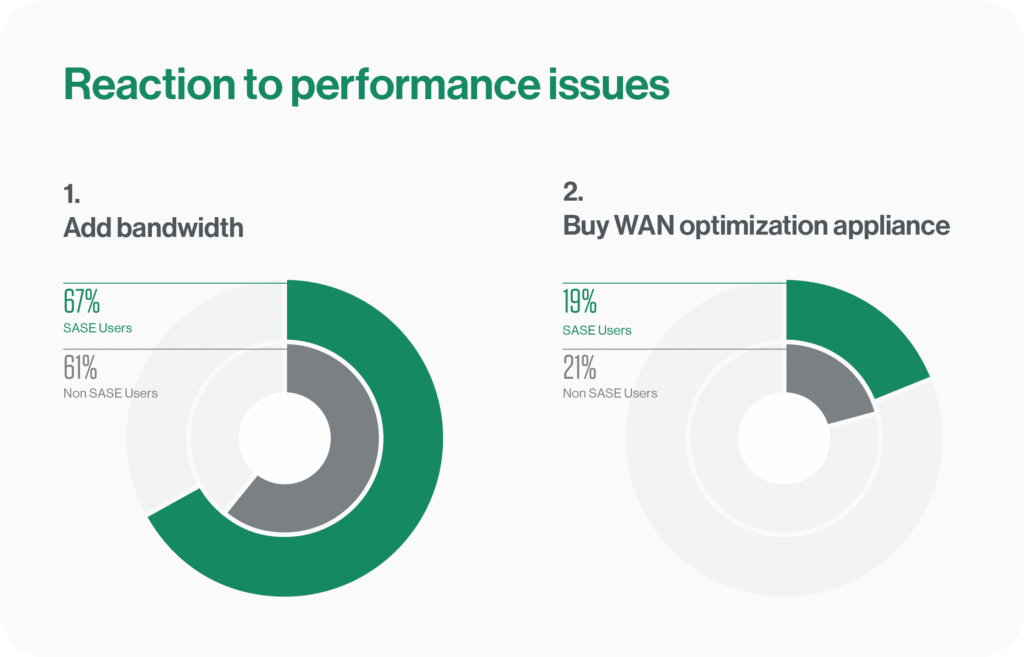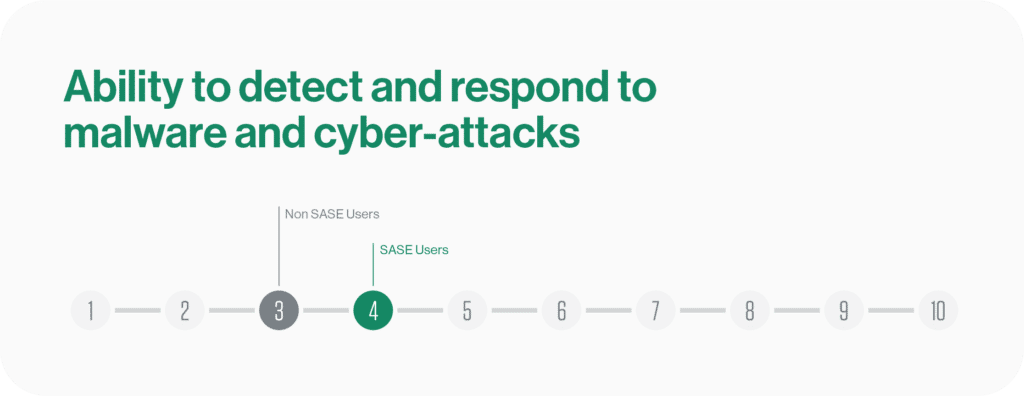Enterprise Survey by SASE Leader Cato Networks Exposes a Chasm Between SASE Approaches
A survey of 2045 IT leaders finds little difference between respondents without SASE and those who adopted SASE product portfolios. Results underscore the importance of assessing platform capabilities when considering SASE.
TEL AVIV, Israel, January 11, 2021— Cato Networks, the provider of the world’s first SASE platform, released the findings of its sixth annual IT survey, Security or Performance: How do you Prioritize? With 2045 IT leaders and nearly 1,000 channel partners participating, the survey provides insight into the tradeoffs enterprises must make when choosing between network performance and security robustness. None of the respondents and only a handful of the channel partners currently work with Cato.
Survey Findings
Despite SASE being touted as the solution for security and network performance, respondent scores differed little between those who have and have not deployed SASE. For example, when asked how they react to performance issues with cloud applications, 67% of SASE users and 61% of non-SASE users claimed they would add bandwidth while 19% of SASE users and 21% of non-SASE users would purchase WAN optimization appliances.

Improving remote access performance was a major priority for all respondents. This makes perfect sense in the new work-from-everywhere reality, and this is one of the most straightforward use cases of SASE. Yet even here, SASE and non-SASE users experience the same problems. 24% of SASE users vs. 27% of non-SASE users complain about poor voice/video quality. Slow application response received the same 50% from both SASE and non-SASE users.
Results were similar for network security. Respondents were asked to rate the level of confidence in their ability to detect and respond to malware and cyber-attacks. On a scale of 1-10, despite SASE being touted as the future of network security, the average answer for SASE users was 4, and for non-SASE users just behind at 3.

Why then is SASE seen as transformational networking and security platform if the respondents see little difference between legacy and SASE architectures?
SASE: A Tale of Two Approaches
The answer, we believe, has to do with the type of SASE architecture. The respondents’ SASE solutions involve multiple products and components lightly integrated together into a SASE portfolio. While such an approach may bring some improvements over legacy architectures, those benefits pale in comparison to what’s achievable with a full SASE platform.
A “true” SASE architecture describes a global cloud service converging security and networking together. It’s a single platform for all essential security services tightly coupled with intelligent SD-WAN overlay. From one console, enterprises can configure and manage all of their security and networking infrastructure. It’s this vision that carries the full benefits of SASE.
“SASE’s benefits come from a rethinking of security and networking architectures by converging them into the cloud,” says Eyal Webber–Zvik, vice president of product marketing at Cato Networks. “If you continue using SASE portfolios made up from legacy point–solutions and appliance architectures, you can’t expect to realize SASE’s benefits.”
We’re hardly the first to observe this distinction. Gartner in a recent report, Predicts 2022: Consolidated Security Platforms Are the Future.1 discusses SASE portfolios vs. SASE platform. According to Gartner,
“Vendors are taking two clear approaches to consolidation:
- Platform Approach
- Leverage interdependencies and commonalities among adjacent systems
- Integrating consoles for common functions
- Support for organizational business objectives at least as effectively as best-of-breed
- Integration and operational simplicity mean security objectives are also met.
- Portfolio Approach
- Leveraged set of unintegrated or lightly integrated products in a buying package
- Multiple consoles with little to no integration and synergy
- Legacy approach in a vendor wrapper
- Will not fulfill any of the promised advantages of consolidation.
Differentiating between these approaches is key to the efficiency of the suite, and vendor marketing will always say they are a platform. As you evaluate products, you must look at how integrated the consoles are for the management and monitoring of the consolidated platform. Also, assess how security elements (such as data definitions, malware engines) and more can be reused without being redefined, or can apply across multiple areas seamlessly. Multiple consoles and multiple definitions are warnings that this is a portfolio approach that should be carefully evaluated.”1
The Cato SASE Cloud is the first global SASE platform, converging SD-WAN and network security into a global, cloud-native service. Cato enables an optimal security posture with self-evolving defense that seamlessly mitigates emerging threats. And with the Cato Global Private Backbone, enterprises can replace their global MPLS while optimizing access to resources across multiple clouds and providing secure, optimized remote access from anywhere.
Resources
- To learn more about Cato, visit https://www.catonetworks.com
- For additional enterprise survey results, see this blog: “Security or Performance: Survey Reveals Confusion about the Promise of SASE.”
- For channel results, see “Channel Partners Favor Scale and Deliverability Over Product Margins, Finds Cato Survey.”
1 Gartner, “Predicts 2022: Consolidated Security Platforms Are the Future”, Charlie Winckless, Joerg Fritsch, Peter Firstbrook, Neil MacDonald, and Brian Lowans, December 1, 2021
GARTNER is a registered trademark and service mark of Gartner, Inc. and/or its affiliates in the U.S. and internationally and is used herein with permission. All rights reserved.
About Cato Networks
Cato is the world’s first SASE platform, converging SD-WAN and network security into a global, cloud-native service. Cato optimizes and secures application access for all users and locations. Using Cato, customers easily migrate from MPLS to SD-WAN, optimize connectivity to on-premises and cloud applications, enable secure branch Internet access everywhere, and seamlessly integrate cloud datacenters and mobile users into the network with a zero-trust architecture. With Cato, the network, and your business, are ready for whatever’s next. CatoNetworks.com @CatoNetworks.








